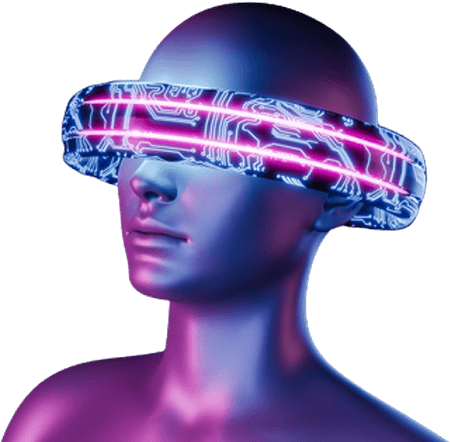Is Claude 3.5 Sonnet Open Source?
Is Claude 3.5 Sonnet Open Source? In the landscape of artificial intelligence (AI), understanding the availability and licensing of advanced models is crucial for developers, researchers, and tech enthusiasts. Claude 3.5 Sonnet, a cutting-edge model developed by Anthropic, has garnered significant attention due to its sophisticated capabilities and advanced features. However, questions persist about whether this model is open source. In this article, we will delve into whether Claude 3.5 Sonnet is open source, exploring its features, licensing, and the implications for the broader AI community.
What is Claude 3.5 Sonnet?
Overview of Claude 3.5 Sonnet
Claude 3.5 Sonnet represents the latest iteration in the Claude series, developed by Anthropic, a company known for its focus on AI safety and ethics. As a state-of-the-art natural language processing (NLP) model, Claude 3.5 Sonnet is designed to handle complex language tasks, providing advanced capabilities in text generation, comprehension, and contextual understanding.
Key Features and Capabilities
- Advanced Language Understanding: Claude 3.5 Sonnet excels at understanding and generating human-like text. Its training on vast datasets enables it to produce coherent and contextually relevant responses across various topics.
- Scalability: The model is designed to scale effectively, handling large volumes of data and supporting diverse applications ranging from chatbots to content generation.
- Ethical Considerations: Anthropic places a strong emphasis on the ethical use of AI, incorporating guidelines to minimize biases and reduce the risk of harmful outputs.
Claude 3.5 Sonnet in the Context of AI Evolution
Claude 3.5 Sonnet builds on the advancements of its predecessors, incorporating lessons learned and improvements made in previous versions. This iterative development approach ensures that each new model benefits from the strengths and weaknesses of earlier versions, leading to more refined and capable AI systems.
The Concept of Open Source
Definition of Open Source
Open source software is characterized by its public availability of source code. This means that anyone can view, modify, and distribute the software, fostering an environment of transparency and collaboration. The open source model contrasts with proprietary software, where the source code is kept secret and controlled by the developer.
Key Principles of Open Source
- Transparency: Users have full visibility into the software’s inner workings, which can enhance trust and security.
- Community Collaboration: Open source projects often involve contributions from a global community, leading to continuous improvement and innovation.
- Freedom and Flexibility: Users have the freedom to modify and adapt the software to meet their specific needs, which can lead to highly customized solutions.
Benefits of Open Source Software
- Cost Efficiency: Many open source projects are free to use, which can significantly reduce software costs for organizations and individuals.
- Security and Reliability: The ability to review and audit the source code can enhance security and reliability, as potential vulnerabilities are more likely to be identified and addressed.
- Innovation: Open source fosters innovation by allowing developers to build on existing solutions, leading to rapid advancements and new features.
Is Claude 3.5 Sonnet Open Source?
Current Licensing and Availability
Claude 3.5 Sonnet is not open source. It is a proprietary model developed and controlled by Anthropic. This means that the source code is not available to the public, and access to the model is governed by specific licensing agreements.
Licensing Model
- Commercial Licensing: Anthropic offers Claude 3.5 Sonnet through a commercial licensing model. This involves terms and conditions that users must adhere to, and often includes fees based on usage or access levels.
- Access Restrictions: Users typically access the model through API integrations or specific platforms provided by Anthropic, rather than having direct access to the source code.
Reasons for Proprietary Licensing
- Intellectual Property Protection: By keeping the model proprietary, Anthropic can protect its innovations and maintain control over its intellectual property. This is particularly important in the competitive field of AI, where proprietary technology can offer significant business advantages.
- Quality Control: Proprietary licensing allows Anthropic to ensure consistent performance and adherence to ethical standards. This control helps maintain the reliability and safety of the model, aligning with Anthropic’s commitment to ethical AI development.
- Revenue Generation: Commercial licensing provides a revenue stream for Anthropic, supporting ongoing research, development, and operational costs. This financial support enables continuous improvements and the development of new technologies.
Comparing Claude 3.5 Sonnet with Open Source Alternatives
Open Source AI Models
Several open source AI models have made significant contributions to the field of natural language processing. These models are freely available and have been developed by various organizations and research communities.
Notable Open Source Models
- GPT-2 and GPT-3: Developed by OpenAI, GPT-2 and GPT-3 are powerful language models that have been widely used in various applications. While GPT-2 is fully open source, GPT-3 is available through a commercial API, with limited access to the underlying model.
- BERT: Developed by Google, BERT (Bidirectional Encoder Representations from Transformers) is an open source model known for its impact on natural language understanding. It is widely used for tasks such as text classification and question answering.
- EleutherAI Models: EleutherAI has developed several open source models, including GPT-Neo and GPT-J. These models aim to provide accessible alternatives to commercial models, offering similar capabilities without the associated costs.
Advantages and Disadvantages of Open Source Models
Advantages
- Transparency: Open source models offer transparency, allowing users to inspect and understand the code and algorithms used. This can enhance trust and enable researchers to verify the model’s behavior.
- Community Collaboration: The open source community contributes to the development and improvement of models, leading to rapid advancements and bug fixes. Collaboration can also lead to innovative applications and extensions.
- Cost Savings: Many open source models are available for free, reducing the financial barriers to entry for individuals and organizations. This can be particularly beneficial for startups and academic research.
Disadvantages
- Security Risks: The openness of the source code can expose vulnerabilities that may be exploited by malicious actors. Ensuring the security of open source models requires ongoing vigilance and updates.
- Variable Support: Open source models may lack the professional support and documentation available with commercial products. Users may need to rely on community forums and documentation for assistance.
- Technical Expertise: Implementing and customizing open source models often requires a higher level of technical expertise. Users must be capable of managing and modifying the code to fit their needs.
Proprietary Models vs. Open Source Models
Proprietary Models (e.g., Claude 3.5 Sonnet)
- Advantages: Proprietary models offer consistent performance, professional support, and adherence to ethical guidelines. They are often backed by dedicated research and development teams.
- Disadvantages: Proprietary models come with licensing costs and limited customization options. Users may also have less visibility into the inner workings of the model.
Open Source Models
- Advantages: Open source models provide flexibility, transparency, and cost savings. They foster innovation through community collaboration and offer users the freedom to modify and adapt the software.
- Disadvantages: Open source models may have security vulnerabilities, variable support, and require technical expertise to implement and customize.
Implications for Developers and Researchers
Access to Advanced AI Capabilities
For developers and researchers, choosing between open source and proprietary models involves weighing several factors, including project requirements, budget, and desired level of control.
- Proprietary Models: Models like Claude 3.5 Sonnet offer advanced capabilities with professional support and ethical considerations. They are suitable for applications requiring high performance and reliability but may involve higher costs and less customization flexibility.
- Open Source Models: Open source models provide flexibility and cost savings, making them ideal for experimentation and customization. However, they may require more technical expertise and come with potential security risks.
Ethical and Safety Considerations
Anthropic’s approach to proprietary licensing for Claude 3.5 Sonnet includes strict ethical guidelines designed to mitigate risks associated with AI misuse. This includes measures to reduce biases and ensure safe and responsible usage.
- Ethical AI Development: Proprietary models often incorporate robust ethical frameworks to address potential risks and ensure responsible AI deployment. This includes efforts to minimize harmful outputs and promote fairness.
- Open Source Model Risks: While open source models contribute to innovation, they may lack centralized oversight, leading to potential ethical concerns. Ensuring responsible usage and mitigating biases requires active engagement from the community.
Future Prospects and Developments
Potential for Open Source Releases
While Claude 3.5 Sonnet is currently proprietary, future developments in AI may lead to increased openness and transparency. Companies and organizations may explore hybrid models that offer both commercial and open source versions of their technology.
- Increased Transparency: As the AI industry evolves, there may be a growing trend towards transparency and collaboration. Future releases could include open source components or hybrid models that combine proprietary and open source elements.
- Community Involvement: The involvement of the AI community in developing and refining models could lead to more open and collaborative approaches. This may result in the release of advanced models with open source components or community-driven innovations.
Trends in AI Licensing
The AI industry is witnessing shifts in licensing models, with some organizations
exploring open source options to foster collaboration and innovation. Monitoring these trends can provide insights into the future availability of advanced AI tools.
- Open Source Initiatives: Organizations may adopt open source initiatives to promote collaboration and accelerate technological advancements. This could lead to the development of new models and tools that are freely accessible to the community.
- Hybrid Models: Hybrid licensing models, combining elements of open source and proprietary approaches, may become more common. These models could offer a balance between transparency, control, and commercialization.
Conclusion
In conclusion, Claude 3.5 Sonnet is not open source. Anthropic’s decision to maintain proprietary control over the model reflects its focus on intellectual property protection, quality control, and revenue generation. While Claude 3.5 Sonnet offers advanced capabilities and adheres to ethical guidelines, it contrasts with the transparency and flexibility of open source alternatives.
The choice between proprietary and open source models depends on various factors, including project requirements, budget, and desired level of control. As the AI landscape continues to evolve, the balance between proprietary and open source approaches will shape the future of technological innovation. Future developments may lead to greater openness and collaboration in the field, potentially resulting in more accessible and transparent AI tools.
Frequently Asked Questions (FAQs)
What is Claude 3.5 Sonnet?
Claude 3.5 Sonnet is an advanced AI model developed by Anthropic, known for its sophisticated language processing capabilities and focus on ethical AI development.
Why is Claude 3.5 Sonnet not open source?
Claude 3.5 Sonnet is not open source to protect intellectual property, ensure consistent performance, and support commercialization efforts. The proprietary model allows Anthropic to maintain control over its technology and adhere to ethical guidelines.
Are there open source alternatives to Claude 3.5 Sonnet?
Yes, several open source AI models are available, including GPT-2, GPT-3, BERT, and models developed by EleutherAI. These models offer various capabilities and are accessible to the public with different licensing terms.
What are the benefits of using open source AI models?
Open source AI models offer transparency, community collaboration, and cost efficiency. They allow users to inspect and modify the code, benefit from community-driven improvements, and reduce software costs.
Will Claude 3.5 Sonnet ever be released as open source?
While there is no current plan for an open source release, future developments in AI may lead to increased transparency and open source initiatives. Monitoring industry trends can provide insights into potential future releases.


